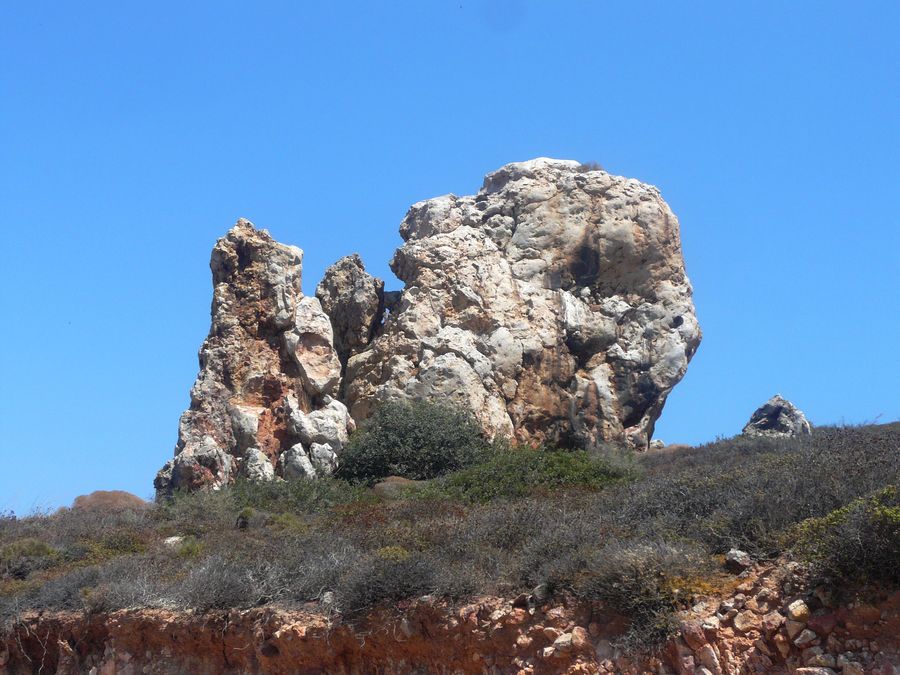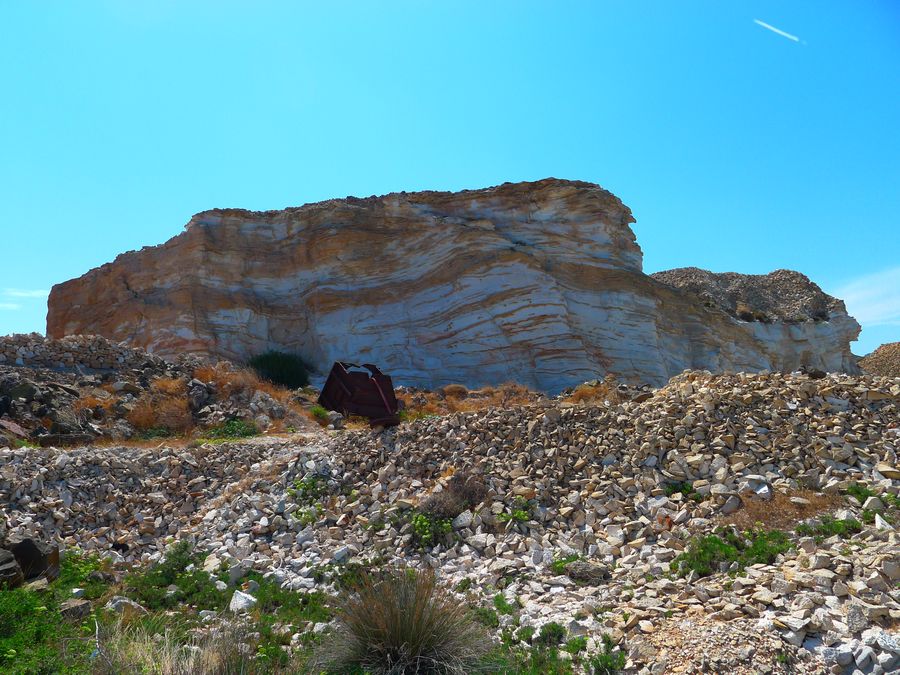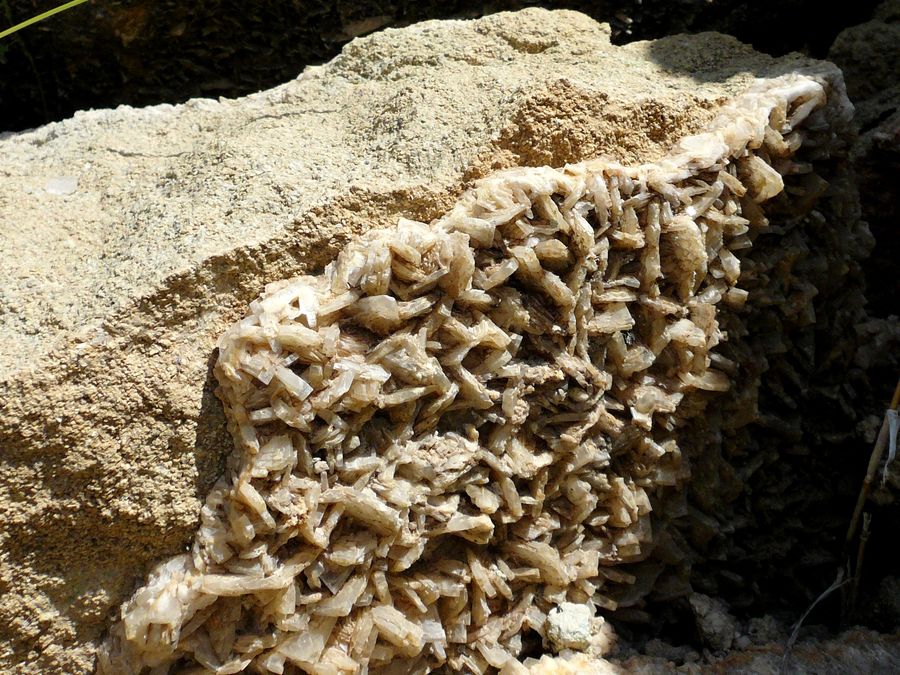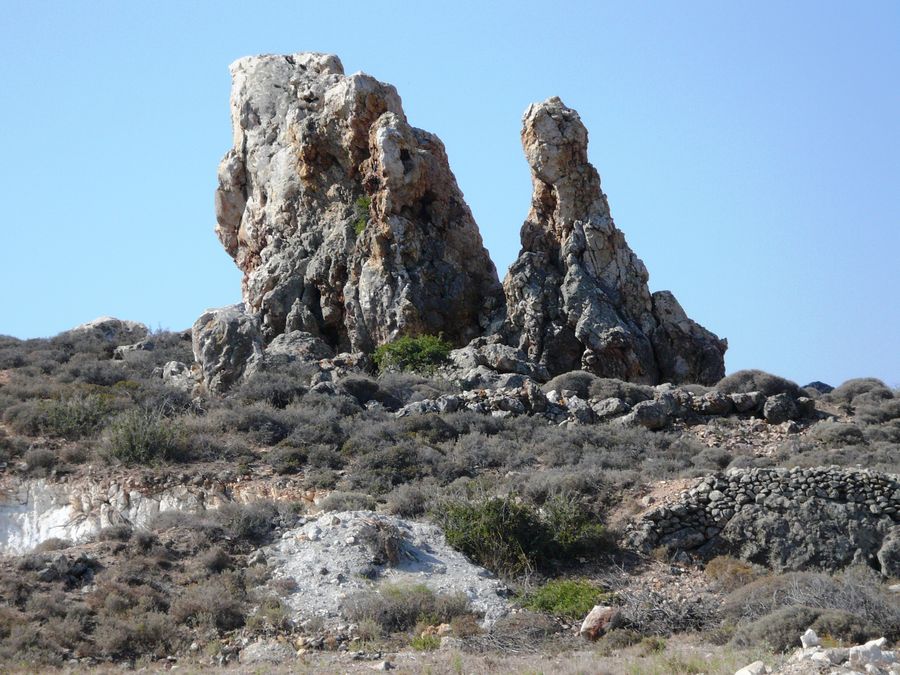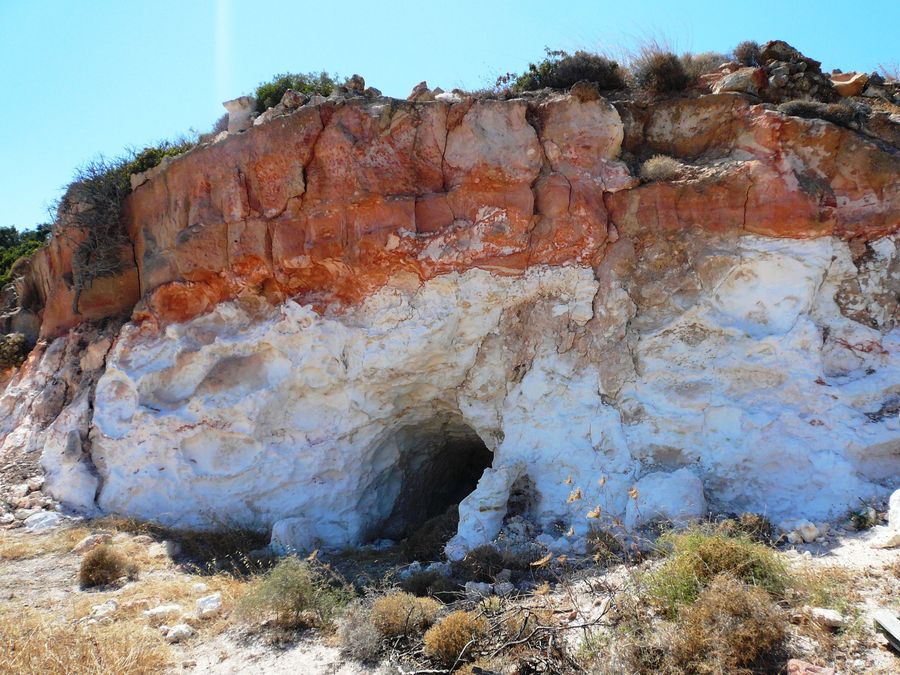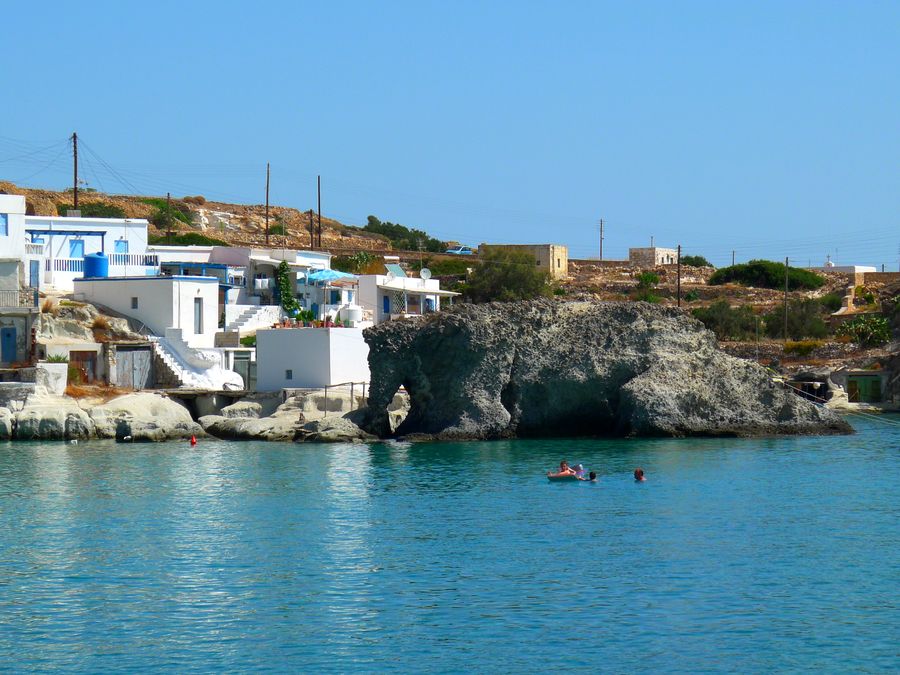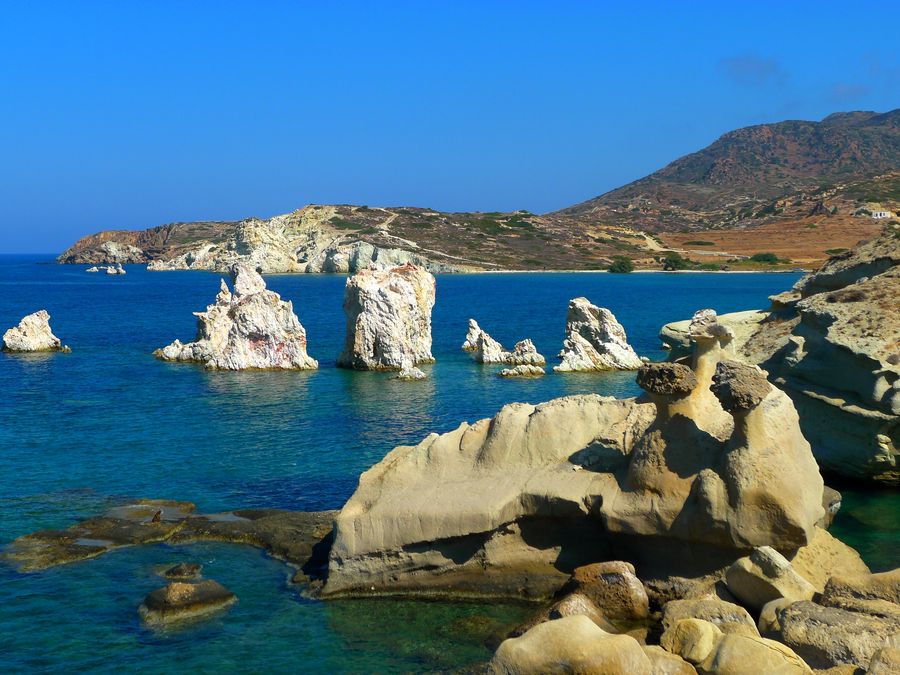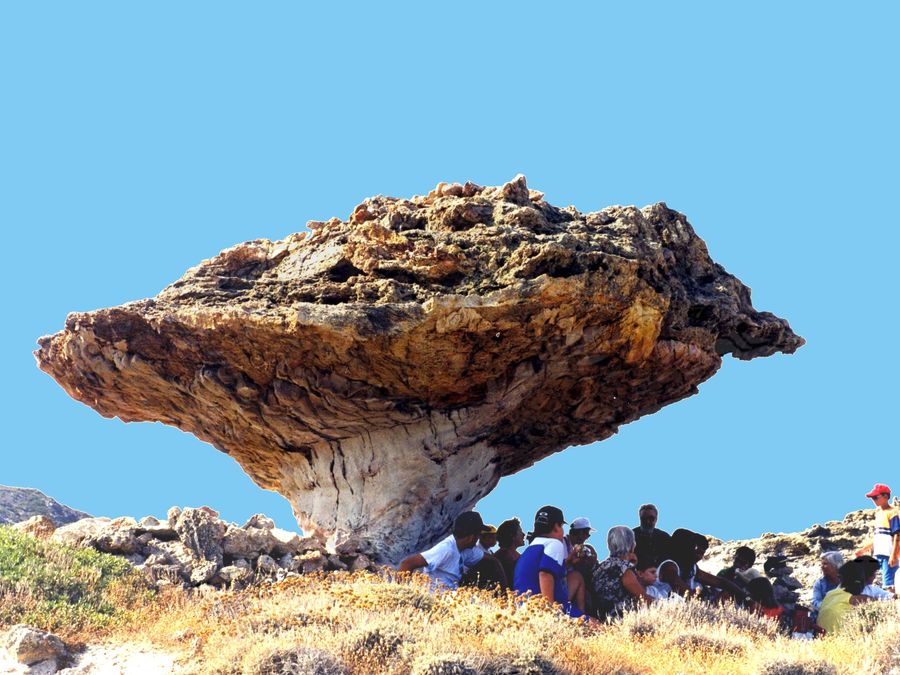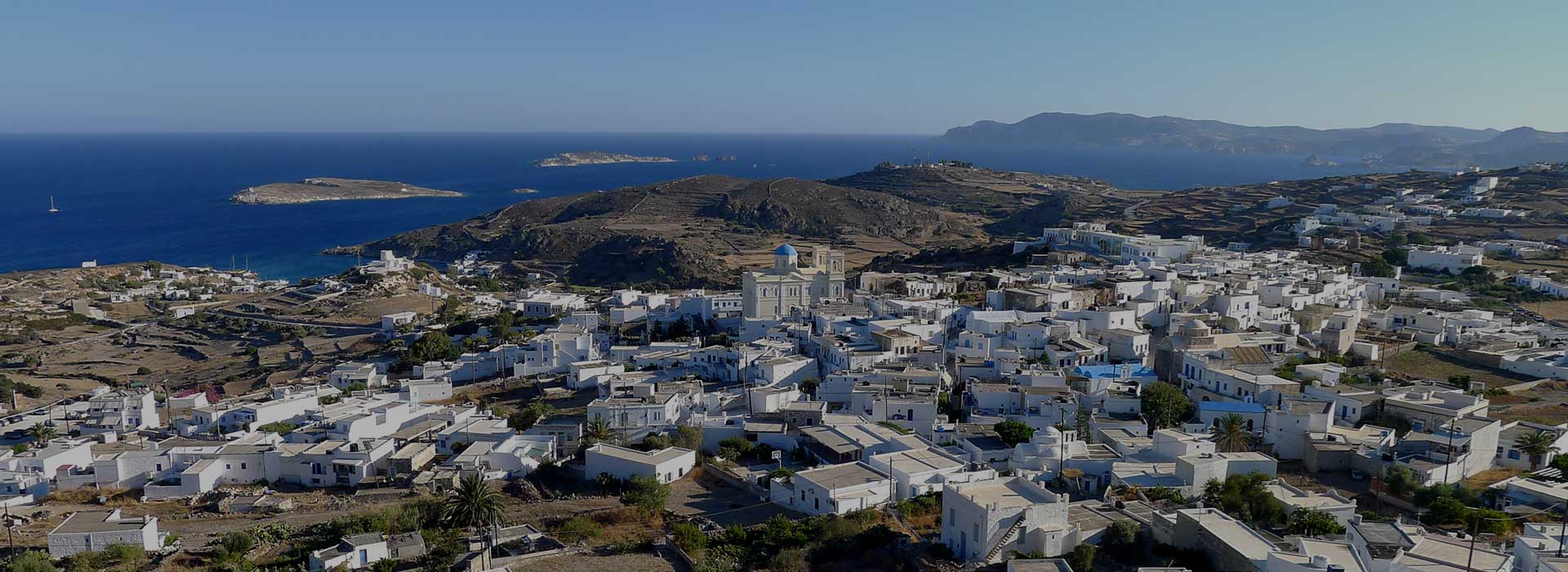
Geology
Over 400 common and rare Mediterranean species are recorded in the natural vegetation of the island . Among them many aromatic and medicinal plants.
Bushes, myrtle, thyme, cedar, sand lilies, capers, wild honeysuckle, rushes and reeds are some of the most recognizable, along with the olives, figs and vines paint a landscape much greener than what a visitor expects to meet in a waterless Cycladic island.
Another species that in fact is foreign to the island although it grows everywhere , are the prickly pear plant. In August you have the opportunity to try some of the most delicious prickly pear fruits of Greece
General
Kimolos,Milos and the smaller islands that surround them, belong tothe Aegean volcanic arc and consist mainly of acidic volcanic rocks.
In some places, the pre – volcanic bedrock can be observed.
Large areas of Kimolos are covered by tuffs and the volcanic activity can be obvious from the hot springs, the existence of a notable geothermal field, the characteristic landscape and the strange landforms. The island is also rich in minerals of the silica group and in significant industrial minerals.
“Kimolia Gee”
Kimolia Gee is a kind of clay of grayish color and a characteristic chemical composition, which took its name from the island of Kimolos, since the island is the exclusive place of its production.
It had been known since the Minoan times for its detergent and pharmaceutical properties. For centuries it was a valuable export product of the island and owes its genesis ,like other kinds of clays (e.g kaolin), in the alteration processes of acid volcanic rocks.
The Kimolians call it “Pelos tse Ennias” , by the name of the area that still holds small quantities of the material, and is believed to be of the best quality, according to some.
The Tuff – “Poria”
The tuff ,is a volcanic rock that people cut in the shape of a rectangular parallelepiped and use it as a building material ,.so called “poria.”
Due to its light weight and insulation characteristics , “Poria” used to be an important revenue for the Kimolians up to the first decades of 20th century since they traded it , all over the Aegean and the Black Sea.
Landforms – Skiadi
“Skiadi” is a huge mushroom stone that dominates the middle of a windy small valley in the interior of the island. Cause of its creation is the wind and the different hardness of its consisting rocks
Its base is made of softer material while the top is of harder .
As the wind drifts grains of dust , it scratches continuously the rock, and through the centuries gave it a characteristic, unique form. This process is called ablation.
For its uniqueness “Skiadi” is included in the Atlas of geological monuments of the Aegean and is a sightseeing for tourists.
Except for “Skiadi” one can meet interesting landforms, in other places of Kimolos too, like “Aspragkremna” at “Mavrospilia”bay, “the elephant” in the “Rema” bay, or the pink pyramids at the Lighthouse bay,of Polyegos.




